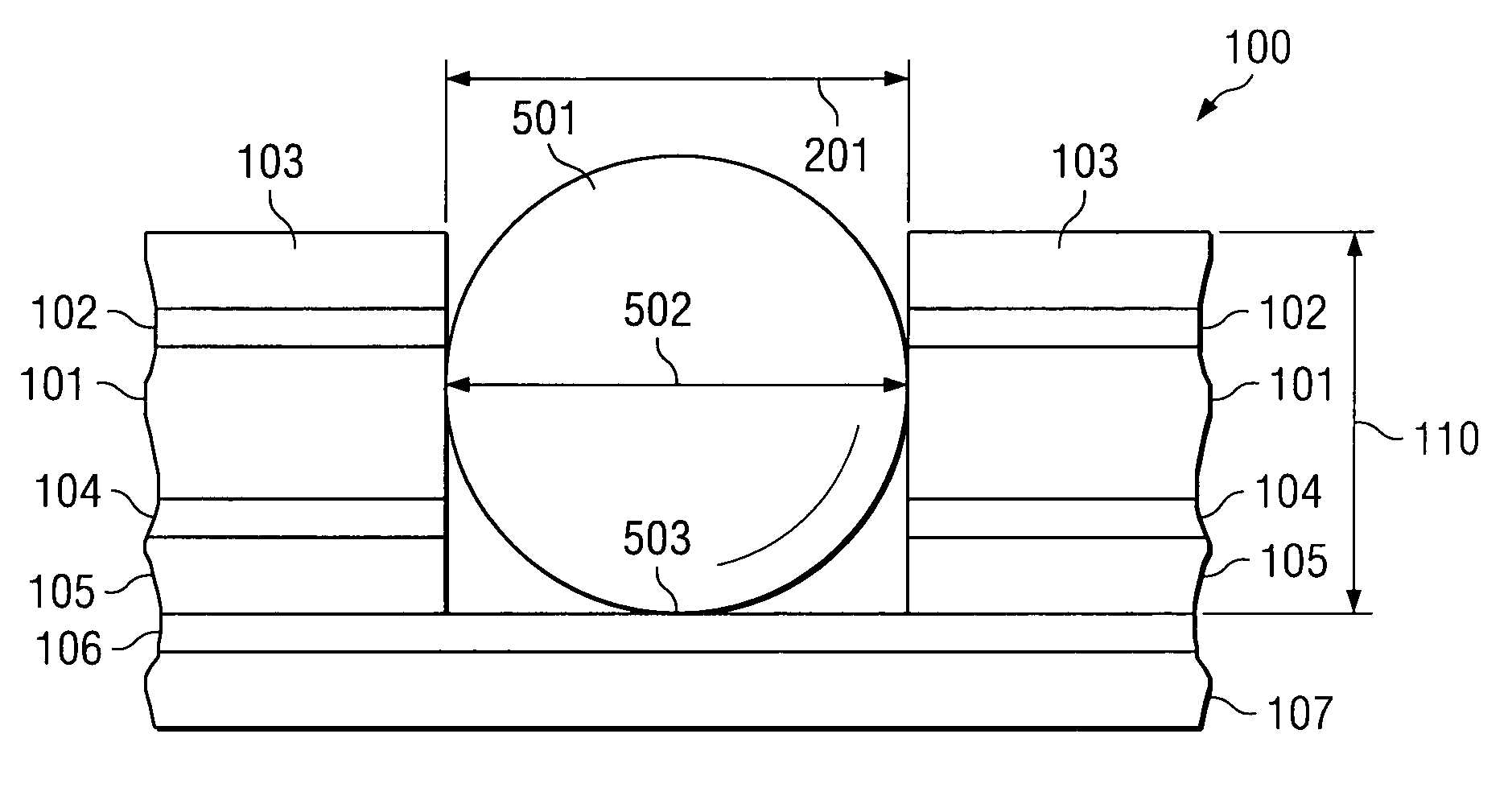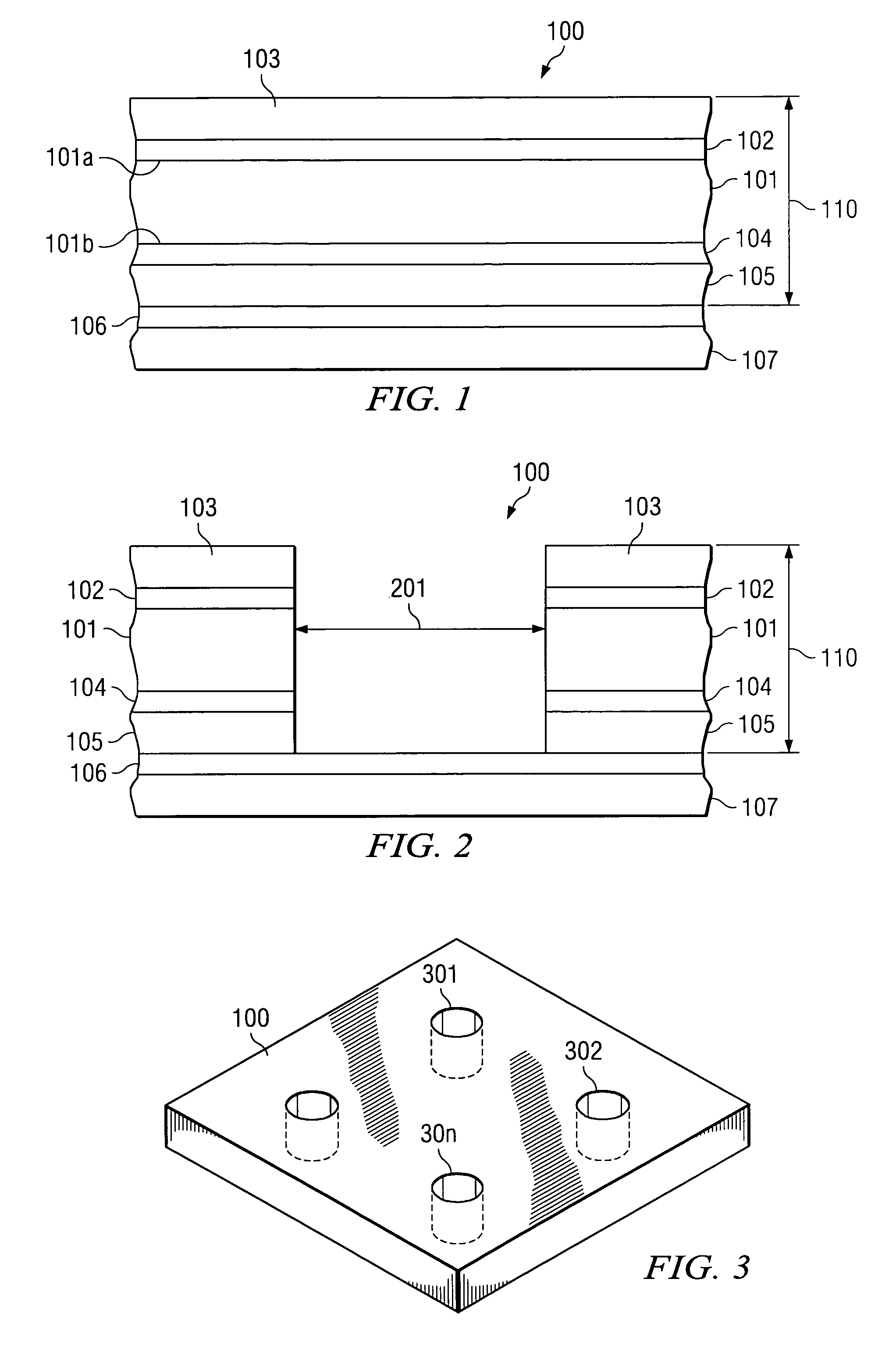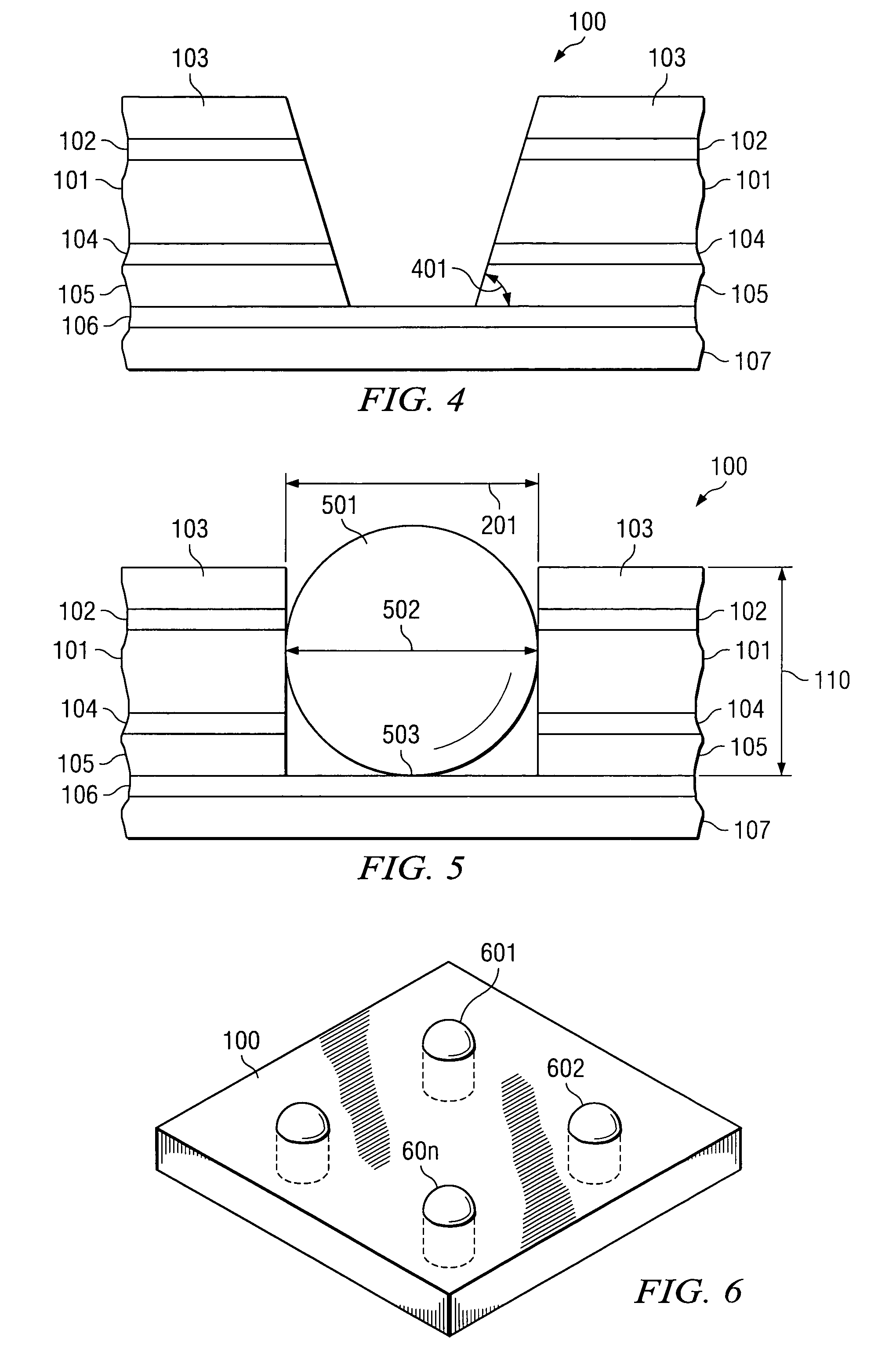Method for fabricating flip-attached and underfilled semiconductor devices
a semiconductor device and flip-attached technology, applied in the field of semiconductor devices and electronic systems, can solve the problems of delaminate the solder joint, create thermomechanical stress on its own, and eventual failure of the assembly, and achieve the effect of reducing the thermomechanical stress and simplifying the process flow
- Summary
- Abstract
- Description
- Claims
- Application Information
AI Technical Summary
Benefits of technology
Problems solved by technology
Method used
Image
Examples
Embodiment Construction
[0035]One embodiment of the invention is depicted in the schematic cross section of FIG. 1 as a tape, generally designated 100, for use as a carrier and specifically in semiconductor device assembly. Tape 100 comprises a base sheet 101 of polymeric, preferably thermoplastic material in the thickness range from about 25 to 450 μm; for some devices, the thickness may reach approximately 800 μm. Preferred thermoplastic base sheet materials include long-chain polyimides with acrylic resin or silicone resin, long-chain polyethylenes with acrylic resin, and long-chain polypropylenes with acrylic resin. The base sheet material is preferably selected so that it softens and enters the low viscosity or liquid phase in the same temperature range, which is needed for reflowing the reflow element embedded in the tape (see below). This temperature range includes, for example, the melting temperature of the solder selected for assembling the device. It is a technical advantage, when the base sheet...
PUM
| Property | Measurement | Unit |
|---|---|---|
| thickness | aaaaa | aaaaa |
| thickness | aaaaa | aaaaa |
| thickness | aaaaa | aaaaa |
Abstract
Description
Claims
Application Information
 Login to View More
Login to View More - R&D
- Intellectual Property
- Life Sciences
- Materials
- Tech Scout
- Unparalleled Data Quality
- Higher Quality Content
- 60% Fewer Hallucinations
Browse by: Latest US Patents, China's latest patents, Technical Efficacy Thesaurus, Application Domain, Technology Topic, Popular Technical Reports.
© 2025 PatSnap. All rights reserved.Legal|Privacy policy|Modern Slavery Act Transparency Statement|Sitemap|About US| Contact US: help@patsnap.com



